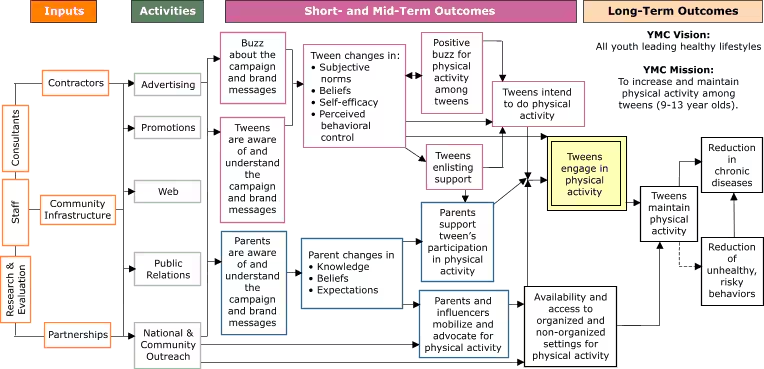The VERB™ Campaign Logic Model: A Tool for Planning and EvaluationPlease select landscape paper orientation when printing this document.
VERB Campaign Vision: All youth leading healthy lifestyles. The Inputs of the campaign are:
All Inputs contribute to campaign activities. Campaign activities include:
All Activities lead to short-term outcomes for both tween and parent audiences. The short-term outcome for the campaign is tween and parent awareness of and buzz about the campaign brand and its messages. Awareness and buzz lead to mid-term outcomes, which include changes in:
The logic indicates that if these changes occur, positive buzz will be created among tweens about physical activity. Tweens will enlist support from their parents and generate intentions to take part in physical activity. Awareness and understanding of the campaign and brand messages by parents leads to changes for parents in Knowledge, Beliefs, and Expectations. The logic indicates that if these changes take place among parents, and if tweens are enlisting their parents' support, parents will support tweens' participation in physical activity, and Parents and influencers will mobilize and advocate for physical activity. The mobilization of parents and influencers and advocacy for physical activity as well as national and community outreach lead to the Availability and access to organized and non-organized settings for physical activity. Tweens' behavioral intention as well as parent support and available and accessible settings are likely to result in tweens engaging in physical activity. The Long-Term Outcomes include tweens engaging in and maintaining physical activity, thereby reducing chronic diseases. The model also indicates a possible displacement strategy: tweens who participate in physical activity may also have a Reduction of unhealthy, risky behavior. |
||
|
|
||
|
|
|
|
